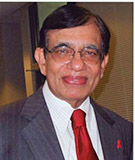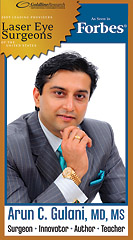
When the heart goes out of rhythm – I

Irregularities of heart rate and rhythm occur often enough as you get older. The occasional extra beats or ectopics frequently referred as missed beats may not be serious but when the irregularity persists for longer duration, it will demand your full attention and treatment. The most frequent such arrhythmia encountered in the general population is “Atrial Fibrillation” often referred as A-Fib.
One of my patients, 64-year-old John K, found out that he has developed atrial fibrillation the hard way. One day while working with his tools in the garage, his right arm went limp and he couldn’t get the words out of his mouth. Soon, he was brought to the emergency room and evaluated. On auscultation of the heart, the ER doctor noted both his heart rate and rhythm were irregular and the EKG confirmed that John indeed had developed A-Fib. An emergency CT scan of the bran showed evidence of a small stroke in his left brain, the much feared complication of A-Fib. With proper therapy, John K improved.
What’s Atrial Fibrillation?
First, a crash course in the heart’s electrical system. You already know heart has two upper chambers called atria and two lower chambers, the ventricles. A normal heart beat starts with an electrical impulse that originates from a cluster of cells located in the upper part of right atrium called sinus node, which causes atria to contract first and squeeze blood into the ventricles; the signal then travels down the atrial wall to the AV node that triggers the contraction of the muscular ventricles sending the blood either into the lungs (from right ventricle) or to rest of the body (from left ventricle). This coordinated electrical activity is absolutely important for proper function of the heart and normal circulation in the body. When the sinus node loses its function and many uncoordinated impulses barrage both atrial chambers resulting in a chaotic activity, the condition is called Atrial Fibrillation. “Quivering atria” may be an apt description.
Why is A-Fib so important? When the atrial activity is irregular, the forceful, coordinated contraction of the atria is lost and blood doesn’t move in a proper forward fashion into the ventricles. This results in blood stagnating in the atria, which predisposes to clot formation. Mind you, such clots are not innocent entities, they can cause serious problems. They may detach from the atrium and move either to the lungs causing pulmonary embolism or to the peripheral arteries, especially into the cerebral artery causing a stroke.
Symptoms of Atrial Fibrillation
When symptoms occur, they may include palpitations, occasional shortness of breath or even chest pain. When the heart rate becomes rapid or very slow, patient may experience the sensation that the heart is beating too fast or too slow. This will result in a reduced cardiac output, which in turn reduces the blood flow to the brain. This will lead to dizziness, general weakness or even a fainting spell. In some people, periods of A-Fib are followed by regular rhythm; this is called ‘paroxysmal A-Fib’; in others, it can be persistent. Other symptoms include fatigue, weakness when trying to exercise, difficulty in walking etc. At times, these symptoms may come and go but generally tend to get worse over a period of time. However, there are many who don’t experience any symptoms at all and A-Fib is discovered while undergoing a routine physical examination or when the patient presents with a complication, as in the case of John K discussed above.
If you have been diagnosed to have A-Fib or living with the condition, you’re not alone. At present, there are more than 2.2 million Americans suffering from this condition and nearly one third of them don’t even realize it. By 2050, it’s estimated that 5.6 to 12 million people will have A-Fib. Now that means we should all have a better understanding of this condition including the increased risk for stroke, heart failure, peripheral artery embolism, etc. The older you are, the greater your chances of developing A-Fib. If you’re a caregiver, it’s important for you to learn more about this condition.
To be continued……
M.P. Ravindra Nathan, M.D., is a cardiologist and Emeritus Editor of AAPI Journal. His book “Stories from My Heart” was recently released. (www.amazon.com or www.bn.com).
EYE CARE
New Horizon in LASIK surgery – No Flaps, No Blades, No Cuts

LASIK (Laser Assisted In-Situ Keratomileusis) is the most famous and widely used eye surgery to make people see without glasses and contact lenses.
In my previous columns (Khaasbaat), I have explained Lasik surgery as making a cut in the cornea (with a blade or a laser) called a flap (like a page of a book) and then using the 193 nm Excimer Laser to precisely sculpt the patient’s refractive (glasses error) number into that cornea.
But what if a Lasik surgery technique used no blades to make a flap? Better still, what if there was no need to make a flap at all (no cuts).
Also, what if this technique could take care of patients who are not candidates for Lasik surgery (thin cornea, Keratoconus, high astigmatism and corneal scars)? And then what if this technique could also correct complications of Lasik surgery itself?
And wait, what if this procedure besides having all of the above virtues could also deliver vision beyond 20/20 in most cases?
Look no further, the time has come to look at the new horizon in Lasik eye surgery where all of the above is possible using a technique and technology combination.
This surgery is now available after two decades of continuous development and advances. I feel it could actually be the only surgical procedure that can not only address difficult and “not a candidate” cases but also normal nearsighted, farsighted and astigmatism cases.
Sure, Lasik is a successful surgery with an excellent track record in the hands of most surgeons. Many patients do search for options following a bad Lasik outcome or side effect and until now had little recourse besides undergoing interventional surgeries like corneal transplants.
I have classified most Lasik surgery needing correction into the following categories:
1. Incorrect Lasik surgery: The surgery did not reach its goal so you may be under corrected or over corrected.
2. Regression of Lasik surgery: Despite a good outcome, your body reverses the error (minimally though).
3. Aging changes over time irrespective of Lasik: Presbyopia (after 40 reading glasses), cataracts, etc.
4. Lasik complications or side effects: Haloes, glares, dry eyes, double vision, etc.
So, let’s review some of the most common presentations: In category 1, the surgeon can lift the same Lasik flap (in most cases, three months after previous surgery) and perform corrective laser surgery to reach the planned vision. In category 2, based on available tissue, the surgeon can lift the flap and perform additional laser or perform various corneoplastique techniques on top of the Lasik flap. In category 3, the surgeon may be able to perform new laser patterns to combine with previous Lasik (for example Monovision goal to correct recent onset presbyopia) or perform a totally unrelated surgery like cataract surgery and combine the two optics for vision goal at this stage of life. In category 4, the surgeon must first evaluate the cause of the complication/side effects and then address that with effective treatments, i.e. Lacrimal plugs for dry eyes, custom-design laser approach for glare or haloes or even reparative corneal surgery like Collagen Cross Linking or minimally invasive corneal transplants.
From the above understanding, one thing becomes clear: Lasik surgery is a serious surgery and can have severe implications on lifestyle for good or bad. The key to successful patient outcomes is “Proper SURGEON selection” and for the surgeon, “Proper SURGERY selection.”
With the new technique, we can now address most of the Lasik complications and side effects. Additionally, we can also correct previous Radial Keratotomy (RK) and cataract surgery and in the same context, cataract surgery (as a Lasik patient ages).
Safety, efficacy and outcomes could never have been so closely aligned as they are now with this approach and I do see surgeons shifting their focus from invasive cutting techniques to delicate laser sculpting, allowing many more to become “candidates” and enjoy their life without glasses.
Arun C. Gulani, M.D., M.S., is director and chief surgeon of Gulani Vision Institute in Jacksonville. He can be reached at [email protected] or visit www.gulanivision.com